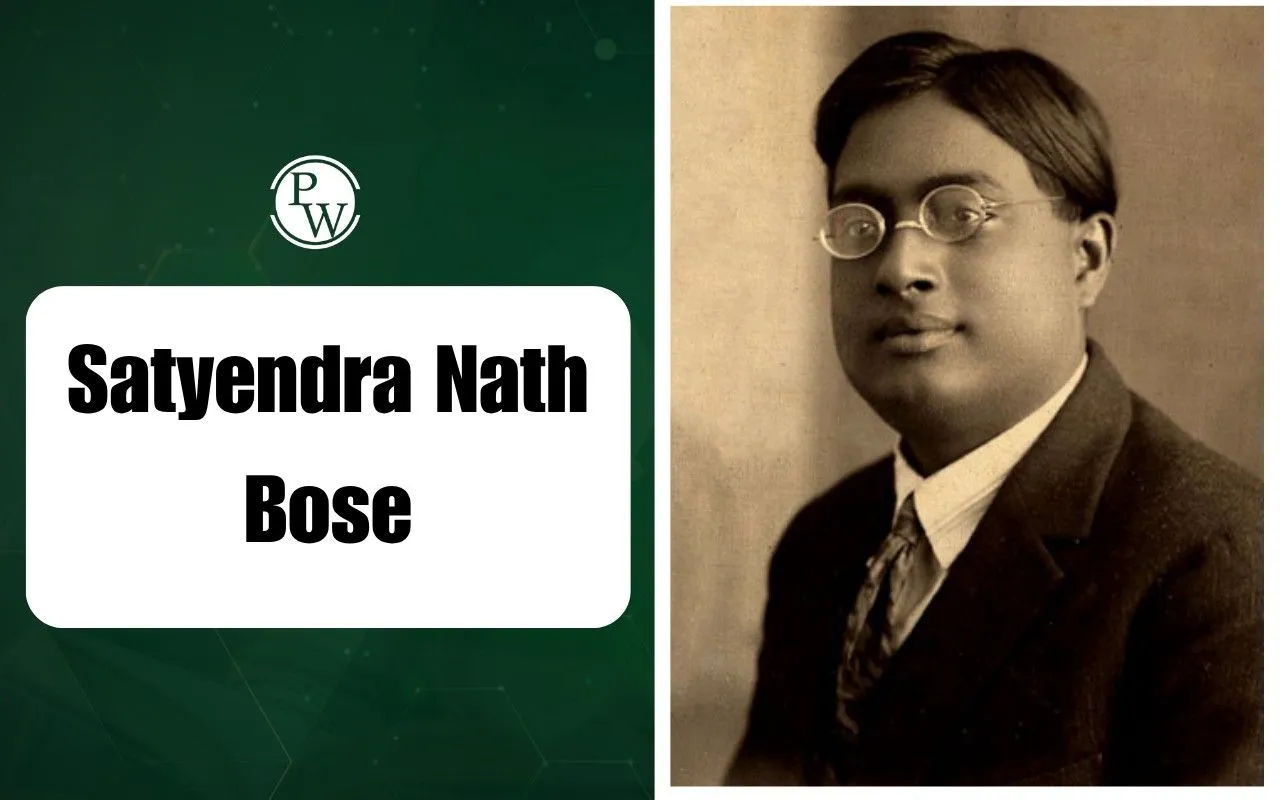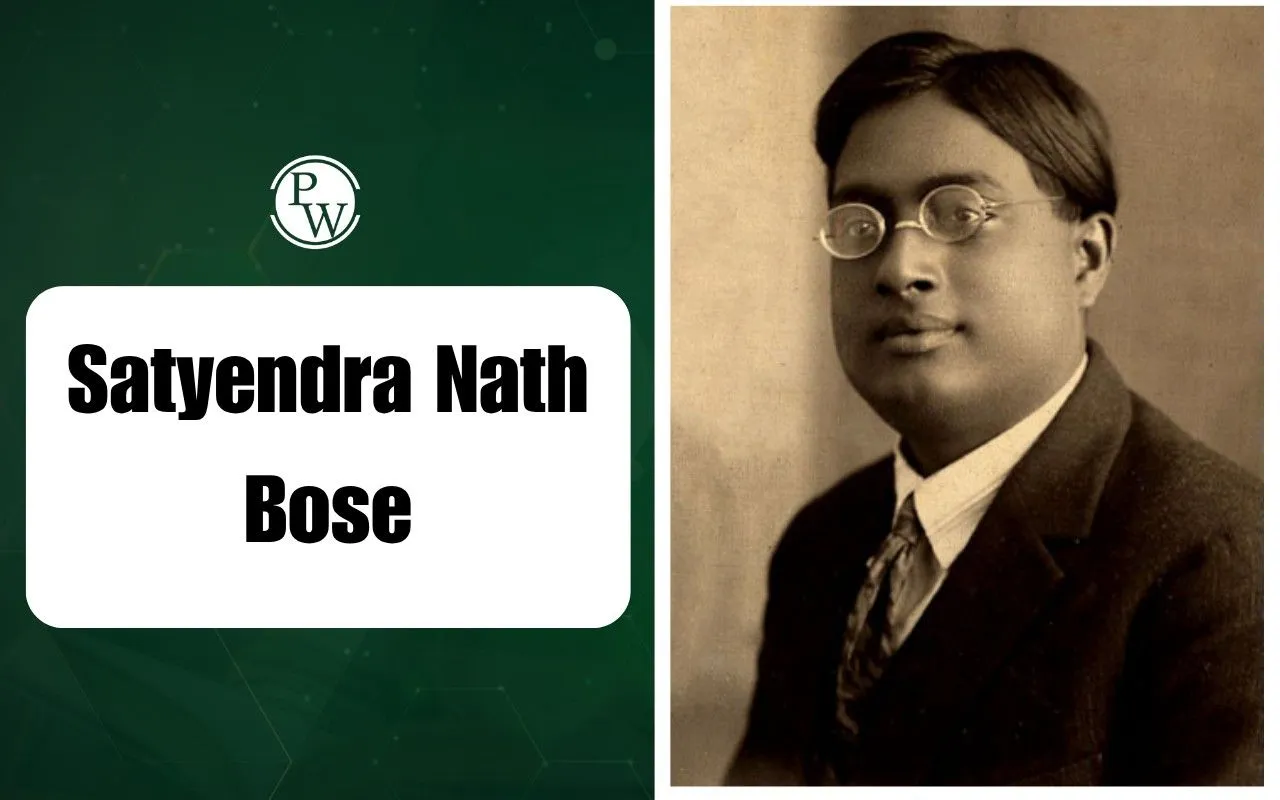

Satyendra Nath Bose is one of the most respected in the history of Indian science. He was a brilliant physicist and mathematician who introduced a revolutionary idea in the early 1920s that forever changed the world's understanding of subatomic particles.
His work was so fundamental that it caught the attention of Albert Einstein, and together, their ideas formed the basis of modern quantum statistics. It is because of his discovery that one of the two main classes of all elementary particles in the universe is named after him: The boson. This explains why Satyendra Nath Bose is famously known as the Father of Bosons.
Satyendra Nath Bose Biography
Satyendra Nath Bose was born on January 1, 1894, in Calcutta, India. From a very young age, he showed a remarkable talent for mathematics.
-
Education: Bose completed his B.Sc. and M.Sc. in Mixed Mathematics from Presidency College, Calcutta, where he was a top-ranked student.
-
Early Career: After finishing his M.Sc. in 1915, he began working as a lecturer at Calcutta University. During this time, he and his colleague Meghnad Saha co-authored a translation of Albert Einstein's papers on the Theory of Relativity from German to English.
-
Later Posts: He later served as a Reader (and then Professor and Head) of the Physics Department at Dacca (now Dhaka) University from 1921 to 1945.
Satyendra Nath Bose's Invention
The most significant contribution of Satyendra Nath Bose to science is his work on quantum statistics, which is referred to as his invention.
The Groundbreaking Paper (1924)
In 1924, while working at Dacca University, Bose wrote a short article titled Planck's Law and the Hypothesis of Light Quanta. In this paper he provided a new and unique way to derive Max Planck's famous radiation law without using classical physics.
This was a revolutionary step, as it involved a new way of counting the possible states of identical particles.
The Collaboration with Albert Einstein
When physics journals in India and abroad refused to publish Bose paper he decided to send it directly to Albert Einstein. Einstein immediately recognized the genius and importance of the work.
-
Translation and Publication: Einstein himself translated the paper into German and arranged for its publication in the prestigious journal Zeitschrift für Physik in 1924.
-
Extension of Work: Einstein then extended Bose's statistical method to describe atoms not just photons.
-
The Result: This joint work led to the creation of what is now known as Bose-Einstein Statistics.
The Boson Particle
Based on this new statistical framework Einstein predicted a state of matter called the Bose-Einstein Condensate where a collection of particles collapses into the lowest possible energy state.
-
In honor of Satyendra Nath Bose's fundamental work, the entire class of particles that follow Bose-Einstein Statistics (particles with an integer spin) was named Bosons by the famous physicist Paul Dirac. The Higgs Boson, discovered in 2012, is a well-known example.
Satyendra Nath Bose Astronomical Observatory
In a major tribute to the great scientist, the Satyendra Nath Bose Astronomical Observatory has been established in the Garpanchkot Hills of the Purulia district, West Bengal.
-
This observatory is the first astronomical observatory in Eastern India and the sixth such facility in the country.
-
It was set up by the Satyendra Nath Bose National Centre for Basic Sciences.
-
The location is strategic situated at an altitude of 600 meters and far from city lights, making it ideal for research in Astronomy and Astrophysics.
Satyendra Nath Bose Books
While Satyendra Nath Bose's legacy is defined by his revolutionary scientific papers, several key books are associated with his name, including collections of his work and notable biographies written about him.
Here are the most significant books and published collections related to Satyendra Nath Bose:
|
Satyendra Nath Bose Books |
||
|
Type of Publication |
Title of Book/Work |
Key Detail |
|
Foundational Scientific Paper |
Planck's Law and the Hypothesis of Light Quanta (1924) |
This is the seminal paper that introduced the new counting method for photons, which Albert Einstein translated and published, leading to Bose-Einstein Statistics. |
|
Collected Works (Edited) |
Satyendra Nath Bose — His Life and Times: Selected Works (with Commentary) |
This comprehensive volume collects his major scientific papers, lectures, and articles across physics, mathematics and unified field theory, with historical analysis. |
|
Biography |
SATYENDRA NATH BOSE |
A detailed biography of the scientist written by Santimay Chatterjee and Enakshi Chatterjee. |
|
Biography |
Satyendra Nath Bose Father of Bosons Book |
A more recent biographical title that highlights his central role in modern physics and the naming of the boson particle. |
|
Biography (Young Adult) |
The Incredible Life of Satyendranath Bose |
A book by Swati Sengupta aimed at younger readers, detailing his life and scientific journey. |
|
Biography |
Satyen Bose: A Life |
A biography of the scientist written by Melvyn Brown and published in 1974. |
